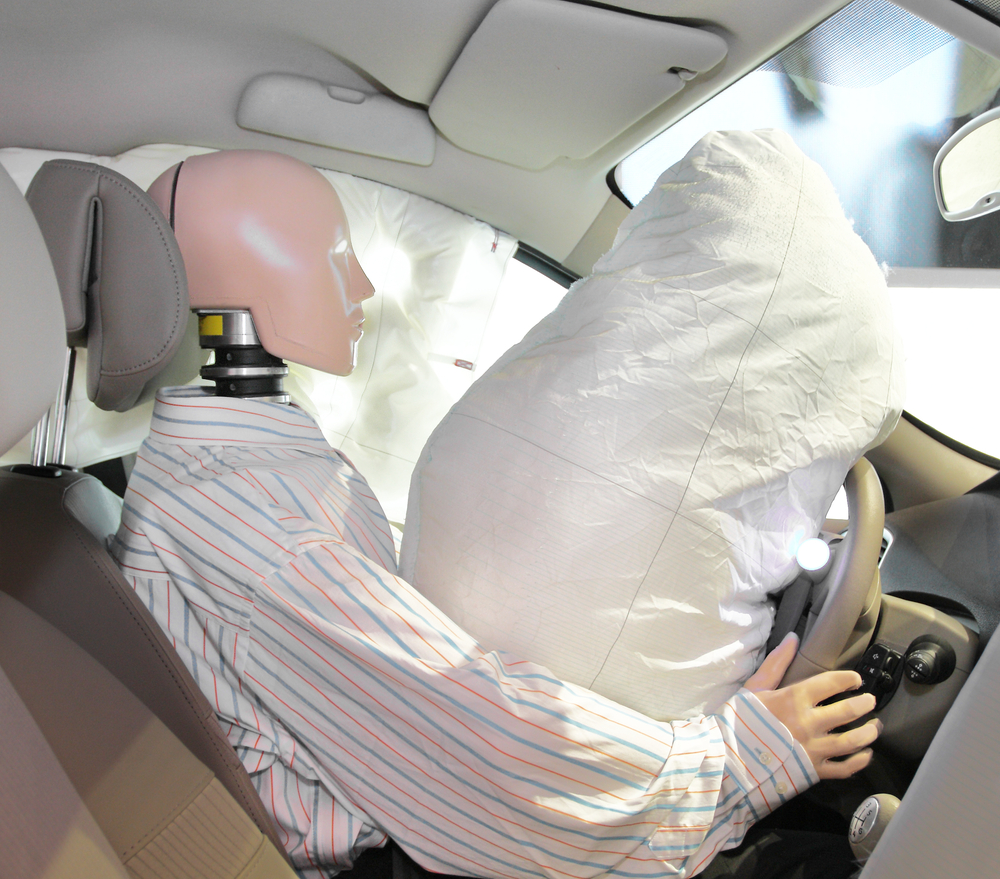Top 10 IIHS safest vehicles on the road for 2021
Valerie Raskovic

We should all be worried about the safety of our roads. According to the most recent statistics on road deaths from the United States Department of Transportation and the National Highway Traffic Safety Administration, the figures appear to be trending in the right direction, with a 2% decrease in 2019. Even alcohol-impaired driving deaths, according to the NHTSA, are as low as they were when the agency began collecting the statistics in 1982.
Suffice to say that accidents still happen, and despite a 2% decrease in road deaths in 2019, 36,096 individuals perished in 2019. The moral of the narrative is that there is still much to be done. Risky conduct, such as speeding, driving while intoxicated, or riding without even a seatbelt, all have an impact on these statistics. Automakers seek to ensure that significant injury or death is avoided in the event that their vehicle collides with another vehicle or a person.
Every year, the IIHS (Insurance Institute for Highway Safety) makes a list of the safest cars on the market. This year, they selected more than 50 that met their strict qualifications. What made the cut? What didn’t? What are the safest, most reliable cars on the road currently?
It may also aid you in the purchase decision-making process to read some real owner vehicle reviews to get a better idea of what others have to say about the vehicle you may be interested in purchasing.
Acura TLX
The 2021 Acura TLX has been completely revamped, and it is now an IIHS Top Safety Pick+, unlike the previous models that came before it from Acura. Top-of-the-line safety tests revealed a high-quality vehicle that is safe for the entire family. What sets it apart? LED low-and high-beam projector headlights are standard on every TLX, and testing revealed that the low beam pattern was never excessively bright for approaching traffic, while the high-beam assist helped improve output while driving. Forward-collision warning and automatic emergency braking, lane-departure warning and lane-keeping assist, blind-spot monitor, and rear cross-traffic alert are all standard features on the TLX.
Audi A7
The Audi A7 is similar to the A6, but it is larger, faster, and has a hatchback rear lid, making it a more practical premium four-door. Almost every IIHS test gave the A7 a Good or Superior rating, with an Acceptable grade for headlights. Even though every A7 includes low and high-beam LED projectors, the lights generated glare, which meant that it was prevented from getting a good grade. The 2019 Audi A7 we last drove weighs 4377 pounds, took 4.4 seconds to reach 60 mph from a standstill, and came to a stop from 70 mph in just 157 feet. Those are some impressive—and safe—numbers.
Genesis G90
The Genesis G90 is a luxurious option that competes with the Mercedes-S-Class, Audi's A8, and BMW's 7-Series. This year's list is devoid of all of them. Crashworthiness, accident avoidance, and mitigation were all high ratings for the G90. It, like the G70, earned an acceptable rating because the child-seat anchors are a little difficult to operate. Front and side curtain airbags kept the driver's head away from the steering wheel, glass, and other harsh surfaces that may cause damage during front-crash testing. Despite the lack of curve-adaptive technology featured on other models, the G90's standard LED projector low- and high-beam headlights scored Good in all four curved highway visibility tests.
Honda Accord
The Honda Accord is one of the best-selling sedans in the United States, with almost 200,000 units sold last year. It's also secure. In IIHS crash testing and accident-avoidance tests, the Accord received top scores. It received a Good+ grade for its child-seat anchors because of the additional easy-to-find latch locations. Because its high-beam employs a halogen reflector rather than the LED reflectors common on all other trims, the Accord LX and Hybrid trims got an Acceptable headlamp rating. Its basic emergency braking system worked well in all testing, dropping to 1 mph in 2.3 seconds before colliding with the test dummy during the 37-mph parallel adult test.
Kia K5
Here’s a newcomer to the list. The Kia K5 has a lot to be excited about. Pedestrian detection technology is one of the features that makes the K5 so incredibly safe and appealing. The IIHS gave good and Superior ratings, although there were inconsistent outcomes during headlight testing. There were four distinct variants that were put to the test. The finest headlights with LED projectors are found on K5 GT-Line and GT vehicles produced after November 2020. However, in all four headlight tests, those identical trims produced before December 2020 earned a poor grade for poor visibility. The shared LED reflectors on the new K5 LX, LXS, GT-Line, EX, and GT got an acceptable grade.
Lexus IS
Since June 2017, this model of Lexus has received a significant safety upgrade. Lexus strengthened the front of the car and its doors, as well as the footwell. These modifications resulted in overall Good IIHS crash-test scores. Surprisingly, the regular headlights on the base IS300 were awarded a better grade than the $1295 Premium Triple-Beam LED projector headlights on the IS300. The output of the triple beams was not considerable, according to the headlight distances evaluated by the IIHS. Another enhancement for 2021 models is better pedestrian and biker recognition in low-light circumstances.
Mazda 6
The Mazda 6 family sedan is one of the safest options in its class, in addition to its stunning appearance and exhilarating driving qualities. With good crash test scores, a superior rating for its standard driver-assistance systems, and an acceptable rating for its standard headlights, it easily achieved the Top Safety Pick+ label. The LED projector headlights on the 6 raise that grade to Good, although they're only available on the Grand Touring Reserve, Signature, or Blackout Edition trim levels. Curve adaptive equipment is not available on non-premium models with LED projectors; therefore, they received an acceptable grade instead. What you pay for is what you get.
Nissan Altima
The Nissan Altima is a nearly perfect car in the eyes of the IIHS. Nearly. The only area where the Altima fell short was in headlight output. The headlights on base Altima’s are still halogen projectors, and even on trims with LED projectors for low- and high-beam headlights, it received an Acceptable grade for poor visibility on bends. High-beam assist, automated emergency braking with pedestrian recognition, and forward-collision warning are standard on every Altima. Rear cross-traffic alert, blind-spot warning, and rear automated braking are standard on all models above the base S grade.
Subaru Legacy
The Legacy has it all. The Subaru Legacy is a big seller for the brand and is rated one of the safest vehicles in America. Adaptive headlamps, Subaru's Eyesight Driver Assist, active cruise control, and lane-keeping assist are all standard on the Legacy. It will also notify you if someone in the second row is not buckled up. LED projector low- and high-beam headlights are standard on every Legacy. The IIHS did highlight that during short overlap passenger-side testing, the dummy's head remained susceptible after falling into the space between the frontal and side curtain airbags, despite obtaining Good and Superior ratings in all six crash tests and crash prevention tests.
Tesla Model 3
Not only is the Tesla Model 3 one of the most sought-after cars on the market, but it's also one of the safest. All six IIHS crash tests gave the Model 3 a good rating, with a Superior rating for vehicle-to-vehicle collision avoidance and an Advanced grade for vehicle-to-pedestrian collision avoidance. It's also safer than the Model S, which got an Acceptable rating for driver-side minor overlap and a Poor rating for insufficient headlights when IIHS tested it in 2017.
Read more articles

